The Narnia Option
SEPTEMBER 8, 2016
In the introduction to the second edition of Brave New World in 1946, Aldous Huxley revisited the fate of his tragic protagonist, John. This noble savage is faced with the dilemma of remaining in the world of soma and the feelies, or returning to the brutal world of the reservation to read Shakespeare in solitude. He chooses to take his own life. Huxley writes:
The Savage is offered only two alternatives, an insane life in Utopia, or the life of a primitive in an Indian village, a life more human in some respects, but in others hardly less queer and abnormal (p. viii).
But Huxley wondered about the possibility of a another option for John and, by extension, for a post-war world that was coming to look like his dystopia far more quickly than he ever could have imagined. In an increasingly horrific world, where might true humanity endure? He writes,
Between the utopian and the primitive horns of his dilemma would lie the possibility of sanity — a possibility already actualized, to some extent, in a community of exiles and refugees from the Brave New World, living within the borders of the Reservation …. Science and technology would be used as though, like the Sabbath, they had been made for man, not (as at present and still more so in the Brave New World) as though man were to be adapted and enslaved to them. Religion would be the conscious and intelligent pursuit of man’s Final End, the unitive knowledge of the immanent Tao or Logos, the transcendent Godhead or Brahman (p. ix).
Our world — or at least the world as we know it — may be coming to an end; but there is and has always been a refuge for those few who desire true human flourishing.
Enter the Narnia option.
C.S. Lewis was Huxley’s contemporary (in fact, they died on the same day), and Lewis was concerned with similar problems. Lewis masterfully demonstrates with the same prophetic genius of Huxley what seems obvious to many of us now — that the modern world has no telos at all. Huxley’s savage is the perfect example of a human living amid the ruined humanity that Lewis foretells in the Abolition of Man — a man forced to make an ultimate decision in a world that eschews ultimate decisions. In Lewis’s conception, all decisions outside of the generic concept he calls “the Tao” (natural law, first principles, the Gospel, etc.), are a choice between competing, inhuman absurdities. He, like Huxley, saw this absurd world speeding into view; and we live in it now.
We have slid down the slippery slope, hurried away from a biblical vision of rightly-ordered humanity, and our culture now consists of work with no intrinsic end, mind-numbing entertainment, ubiquitous self-medication, the valorization of every sexual desire and identity under the sun, genetic manipulation, and industrial levels of abortion on demand with the harvesting of baby organs. Our brave new world is populated by humanity’s non-human descendants (us!), and yet an expectation of quintessentially human virtue remains. As Lewis puts it so powerfully:
We make men without chests and expect of them virtue and enterprise. We laugh at honour and are shocked to find traitors in our midst. We castrate and bid the geldings be fruitful. (Abolition, p. 26)
But where Huxley grasped for a solution, Lewis found it in the Church.
Although The Abolition of Man, like Huxley’s Brave New World, sounds a thoroughly pessimistic note, Christian hope for the renewal of creation permeates Lewis’s fiction. Huxley’s hypothetical option is always in Lewis’s sights, and here lies our hope as Christians. The last battle may be lost, but the fight has not been for naught. It was never ours to win in the first place.
In this way, Lewis is the priest to Huxley’s prophet. In Prince Caspian, Trumpkin the dwarf, a token of a time before darkness and cruelty, asks, “Who believes in Aslan nowadays?”
“I do,” Caspian replies, “And if I hadn’t believed in him before, I would now.”
Caspian, the refugee from dystopia, is desperate for the reality that those hiding out from it have almost forgotten. A faithful leader has arrived, and Aslan is quite unexpectedly on the move again. Likewise in The Silver Chair, the usually pessimistic Puddleglum, held prisoner underground by a witch queen, declares, “I’m on Aslan’s side even if there isn’t any Aslan to lead it. I’m going to live like a Narnian as I can even if there isn’t any Narnia” (p. 182).
This is the Narnia option — reality to be found beyond (or perhaps beneath) the Brave New World. This is life in the Church, which is the only refuge for human beings in a dehumanized age, and the only way through our present dystopia, come what may. To our world, the Narnia option may seem increasingly like an imaginary construct. And we may too easily forget it from Monday through Saturday, just as the Pevensie children sometimes forget having sat on the thrones at Cair Paravel when they come back past the lamp post and through the wardrobe. But belonging to a highly counter-cultural Church, a world inside a wardrobe, must increasingly feel like home. And the unexpected movement of Jesus, our untamed king, will be our only and ineradicable hope.

 Search
Search

